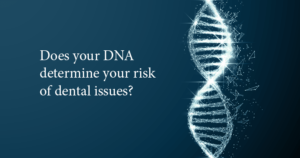Comprehensive Dentistry |3 min read
More On Headaches; A Bottom Line Article
Bottom Line Secrets is an online newsletter. I found this article in the end of December’s issue supporting the discussion that I have been writing about the last several blogs. I am really interested in stories you may have related to this headache issue. I can tell you that in my experience 90% of the patients presented with various forms of headaches have had complete resolution when the bite is treated properly.
Your Headache May Be a Dental Problem in Disguise
Mark A. Breiner, DDS
Breiner Whole-Body Health Centre
I have found in my more than 30 years as a dentist that head pain (including headaches and facial pain) can be linked to problems in the mouth.
Example: My receptionist had been getting daily headaches for years. When I removed her impacted wisdom teeth, the headaches stopped. An impacted tooth can cause no local symptoms but still affect nerves and cause chronic headaches.
Other dental problems that can lead to head pain…Misaligned bite. It’s among the main causes of “tension” headaches, which cause tightness and/or dull pain in the temples, across the forehead or on the back of the head.
What happens: An uneven bite prevents jaw muscles from completely relaxing. Chronic muscle tension produces excess lactic acid, a metabolic by-product that can lead to head pain.
Few people have perfectly aligned teeth. For genetic reasons, some people’s teeth are crooked or overlap. The upper and lower jaws might be different sizes or malformed. Poor dental restorations, such as crowns and fillings, also can cause an uneven bite.
Dentists can make various types of appliances that fit over the teeth and allow the muscles to relax. I advise patients to wear the appliance for several days. If the headaches disappear, the bite probably needs to be permanently realigned. This usually is done by slightly grinding/reshaping certain teeth.Temporomandibular dysfunction (TMD) — formerly known as TMJ syndrome — can cause severe headaches, often accompanied by pain in the jaw, neck, shoulders or back, as well as dizziness and ringing in the ears.
What happens: The temporomandibular joint, in front of the ear, where the lower jaw rests in the skull-bone socket, gets a lot of stress. It moves when we talk, eat or swallow. It experiences even more pressure in those who grind their teeth at night… clench their jaws… have misaligned bites… or chew gum constantly. Continuous pressure can produce chronic pain.
Most patients with TMD will require bite adjustments, and sometimes braces, to achieve normal jaw movements and teeth alignment. (A bite appliance, as described above, can enable your dentist to tell if your symptoms are related to TMD.)
Also helpful: Natural remedies, such as hypericum (St. John’s wort), magnesium phosphate and calcium phosphate.Trigeminal neuralgia (TN) typically causes sudden severe pain that starts at one side of the mouth and then “shoots out” to different parts of the same side of the face. It lasts only a few seconds and often is caused by previous dental work.
What happens: Dental procedures, such as a tooth extraction or root canal, may produce a small hole (cavitation) in the jawbone that can become a repository for pain-causing toxins and inflammatory chemicals — and a site of persistent infection.
A dentist can drill a hole into the cavitation and inject a few drops of anesthetic. The pain will disappear almost instantly when a cavitation is surgically debrided (cleaned). Patients also may improve with the injection of homeopathic remedies into the cavitation.
Important: Anyone with chronic head pain should be seen by a doctor to rule out conditions such as high blood pressure and tumors.
Example: My receptionist had been getting daily headaches for years. When I removed her impacted wisdom teeth, the headaches stopped. An impacted tooth can cause no local symptoms but still affect nerves and cause chronic headaches.
Other dental problems that can lead to head pain…Misaligned bite. It’s among the main causes of “tension” headaches, which cause tightness and/or dull pain in the temples, across the forehead or on the back of the head.
What happens: An uneven bite prevents jaw muscles from completely relaxing. Chronic muscle tension produces excess lactic acid, a metabolic by-product that can lead to head pain.
Few people have perfectly aligned teeth. For genetic reasons, some people’s teeth are crooked or overlap. The upper and lower jaws might be different sizes or malformed. Poor dental restorations, such as crowns and fillings, also can cause an uneven bite.
Dentists can make various types of appliances that fit over the teeth and allow the muscles to relax. I advise patients to wear the appliance for several days. If the headaches disappear, the bite probably needs to be permanently realigned. This usually is done by slightly grinding/reshaping certain teeth.Temporomandibular dysfunction (TMD) — formerly known as TMJ syndrome — can cause severe headaches, often accompanied by pain in the jaw, neck, shoulders or back, as well as dizziness and ringing in the ears.
What happens: The temporomandibular joint, in front of the ear, where the lower jaw rests in the skull-bone socket, gets a lot of stress. It moves when we talk, eat or swallow. It experiences even more pressure in those who grind their teeth at night… clench their jaws… have misaligned bites… or chew gum constantly. Continuous pressure can produce chronic pain.
Most patients with TMD will require bite adjustments, and sometimes braces, to achieve normal jaw movements and teeth alignment. (A bite appliance, as described above, can enable your dentist to tell if your symptoms are related to TMD.)
Also helpful: Natural remedies, such as hypericum (St. John’s wort), magnesium phosphate and calcium phosphate.Trigeminal neuralgia (TN) typically causes sudden severe pain that starts at one side of the mouth and then “shoots out” to different parts of the same side of the face. It lasts only a few seconds and often is caused by previous dental work.
What happens: Dental procedures, such as a tooth extraction or root canal, may produce a small hole (cavitation) in the jawbone that can become a repository for pain-causing toxins and inflammatory chemicals — and a site of persistent infection.
A dentist can drill a hole into the cavitation and inject a few drops of anesthetic. The pain will disappear almost instantly when a cavitation is surgically debrided (cleaned). Patients also may improve with the injection of homeopathic remedies into the cavitation.
Important: Anyone with chronic head pain should be seen by a doctor to rule out conditions such as high blood pressure and tumors.
Bottom Line/Personal interviewed Mark A. Breiner, DDS, a holistic dentist and founder of Breiner Whole-Body Health Centre, in Trumbull, Connecticut.


